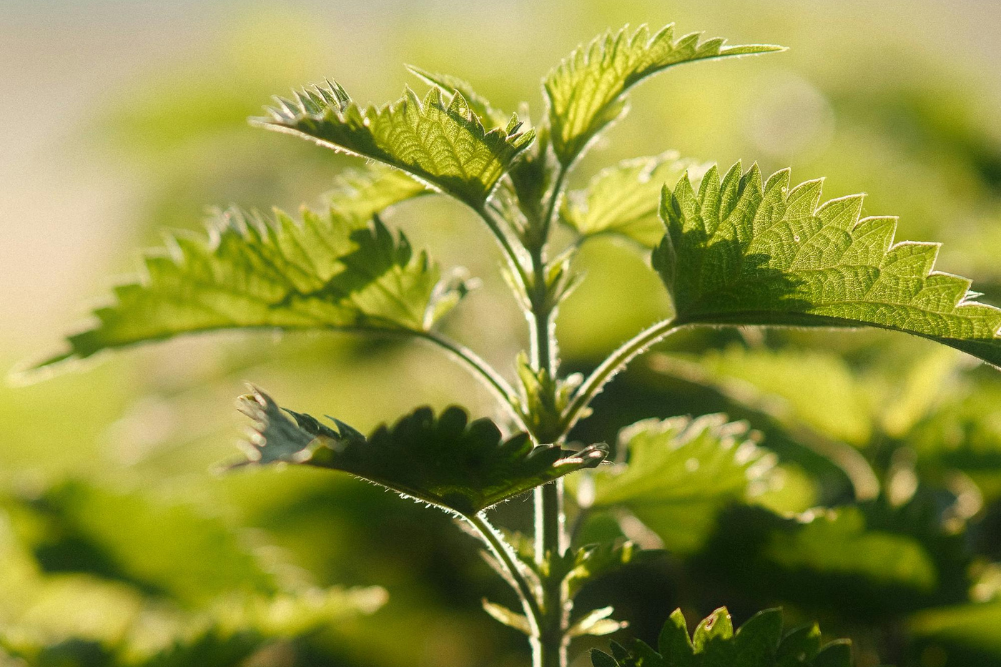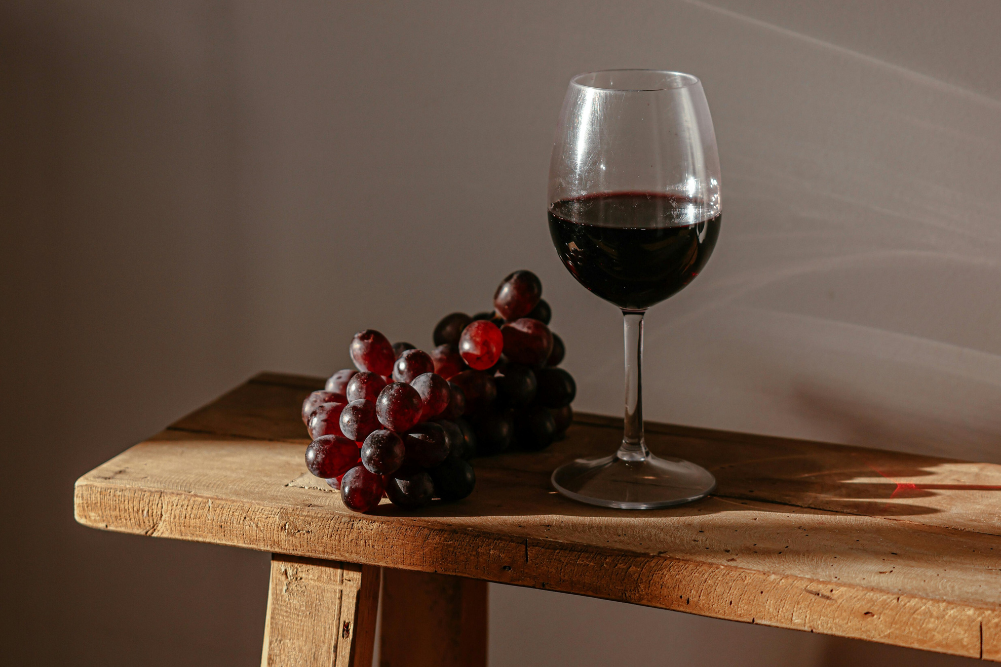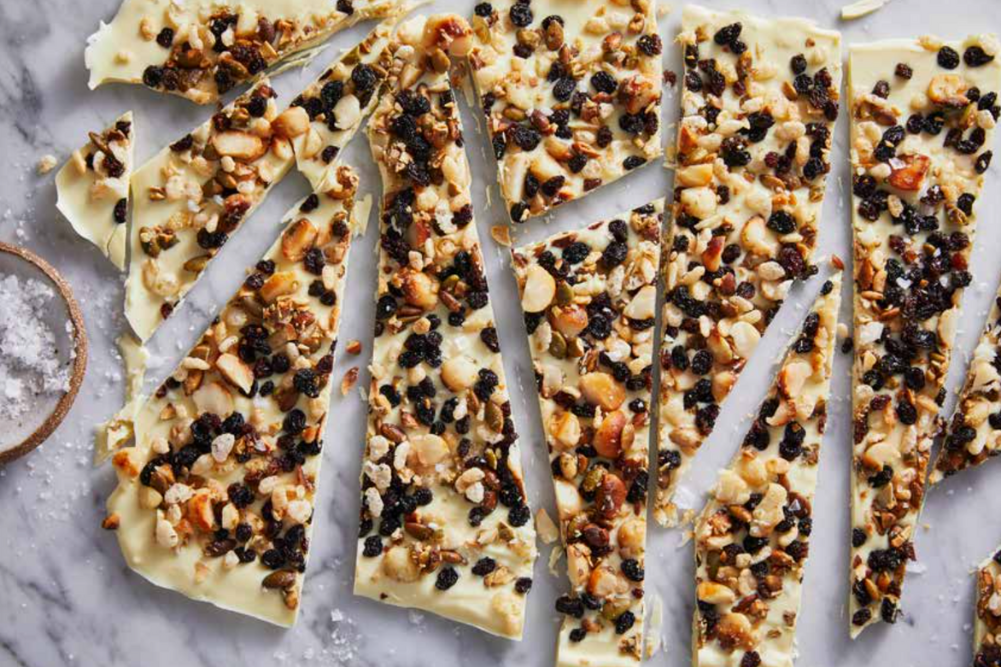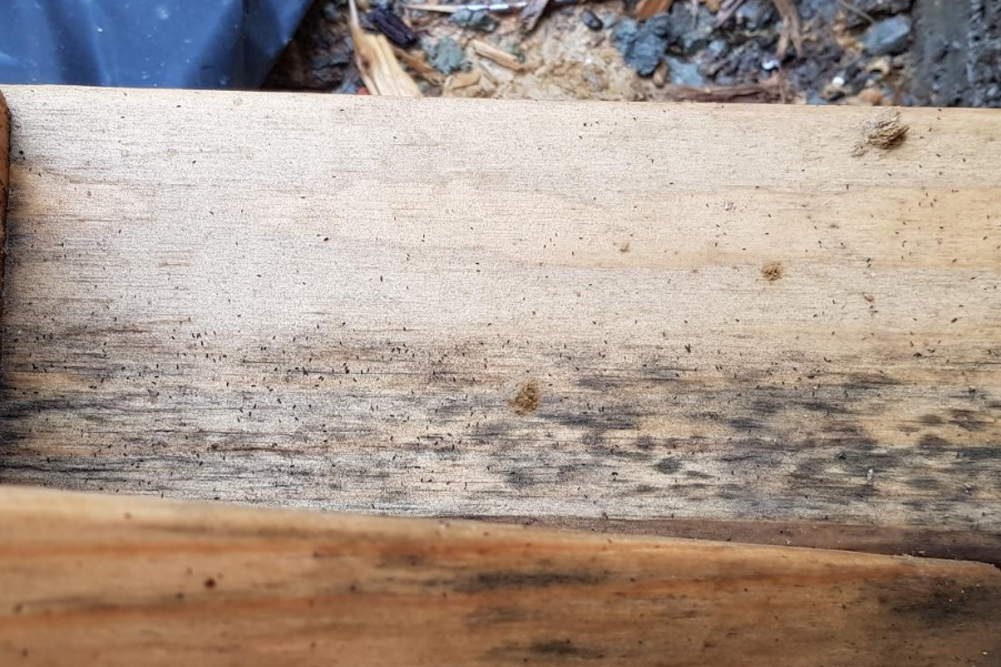How to choose the best eco-friendly paint for a healthy home
With more of us turning to DIY paint jobs to beautify our spaces, it’s important to look beyond colour swatches and trends to those often neglected health aspects. Fortunately, staying informed needn’t involve rigorous study of technical manuals. In fact, it can be as easy as getting some advice from an independent industry specialist — like Victoria-based Daniel Wurm.
Fifteen years ago Wurm, originally a painter, came home with a severe headache from the chemicals in paint. “I thought — this is ridiculous,” Wurm recalls. “I saw older painters and they had health issues. I thought, ‘I’ve got to get out of this’.” That night he google-searched “natural paints”, beginning a journey that would lead him to become Australia’s leading educator on the use of non-toxic paints. Along with founding GreenPainters and the Green Building Institute (which trains tradies in sustainable and green practices), Wurm is the managing director of the National Painting and Decorating Institute.
Staying safe
Wurm says the main hazards to watch out for are asbestos and heavy metals (especially lead and cadmium) when removing old paint or preparing surfaces. “If you’re living in a house that was built before 1971, there’s a very good chance it’s got lead paint on it,” he warns. “If you’re living in a house that was before 1989, then it could have asbestos. The next wave of asbestos-related deaths is going to be from DIY home renovators.”
If your home is older than 1971, Wurm advocates using a licensed painter trained in the identification and removal of lead paint and asbestos. If you’re going to go ahead and do it yourself, he suggests watching the free videos on what to do, available on the National Painting and Decorating Institute’s website.
Regardless of the age of your home or the type of paint on it, take precautions against inhaling paint dust during the removal process. Wear a good dust mask, protective clothing and gloves.
Another hazard to be aware of are chemicals present in paint.
What’s in paint?
Paint is a type of plastic manufactured from petroleum. The main ingredients are solvents (which give paint flow and hold the other components) as well as pigments (which provide colour and resins), which bind the ingredients. “When you can smell paint, that’s the chemicals coming off the paint, outgassing and going into your indoor air environment,” Wurm says. Chemicals that outgas at room temperature, collectively dubbed “volatile organic compounds” (VOCs), are harmful to human health, can cause “sick building syndrome” as well as pollute the environment.
As the name suggests, natural paints use natural ingredients, like linseed oil, earth pigments, beeswax and lime.
According to GreenPainters, the paint industry contributes significantly to the estimated 60,000 tonnes of VOCs that pollute the atmosphere annually. Enamel paint is more toxic than the more water-based, acrylic variety. “In enamel paint, the binders and solvents are manufactured from petroleum,” Wurm reveals. “That’s why they call it ‘oil-based’ paint.”
According to industry sources, the typical oil-based paint is comprised of 35-50 per cent VOCs, including toluene, xylene, acetone and other substances hazardous to human health. Acrylic, water-based paint contains about 6 per cent VOCs. However, it’s also likely to out-gas toxins — such as formaldehyde, plasticisers, fungicides and propylene.
What options exist for those who want a low-tox look?
Low and zero-VOC
All paint manufacturers now offer a low-VOC paint range and some have zero-VOC options. According to industry sources, low-VOC wall paint usually contains 1 to 75 grams of VOCs per litre, compared to 350-450g for the traditional comparison. Tints affect VOC levels — darker tints have higher amounts.
However, VOCs aren’t the only issue. “Even the low and zero-VOC paints are still petrochemicals,” Wurm says. “They’re basically liquid plastic.”
The natural choice
“If you really are concerned about your health, choose natural paints,” Wurm says. He particularly recommends them for those with allergies, chemical sensitivity, pregnant women and those with young children.
As the name suggests, natural paints use natural ingredients, like linseed oil, earth pigments, beeswax and lime. Some companies, including Bio, Volvox and Livos also offer a natural version of enamel paint.
“Natural paints are a bit like organic food — they cost more, but they’re not as widely available,” Wurm says.
Do they perform as well as the traditional ones? Natural paint has a more velvety, softer look, Wurm says. Although it’s very durable, it’s not suitable for exteriors or scrubbing. “In my own house I use natural paint. If we get marks on the wall, instead of scrubbing it with chemicals we gently wash it, or even just touch it up.”
When it comes to choosing natural products, do your research and use an independent source. “There’s a lot of greenwashing going on,” Wurm says. Avoid manufacturers that don’t disclose their ingredients, even if the label says it’s natural.
What to use where
Exteriors: Wurm recommends zero-VOC, acrylic paints. “There are some natural mineral silicate paints that you can use on the exterior but they’re only suitable for masonry surfaces like concrete, stone, brick or render,” he says.
Interiors: He suggests zero-VOC or natural paints. “Why would you choose low-VOC when you can get zero-VOC?”
Trims: Areas that people touch constantly like doors, skirting, architraves and windows require more durable paint, he says. “Traditionally, painters use glossy paints for trims and they use less glossy paints for walls.” Glosses can be obtained in natural paints.
Floors: Can be painted with a natural, durable timber oil, like Livos.
Prepping: Correct preparation of surfaces prior to painting is important. “Most of the issues people have with paint have got nothing to do with the paint, but with preparation,” Wurm says. “Even sometimes a painter will do insufficient preparation. There are a million different types of preparation and surfaces. They all require different preparations.”
Sustainable painting clean up
Under the Paintback scheme introduced this year, it’s free to dispose of old paint for recycling. Avoid tipping paint-contaminated water into storm water or sewerage systems. Even zero-VOC brand paints contain fungicides (a source of mercury) and other toxins harmful to humans and the environment. Unless you’re using natural paint, don’t tip the cleaning waste water into your own garden. GreenPainters suggest you use one container each for cleaning brushes and rinsing. Leave the first container overnight for paint solids to settle to the bottom, then pour the water onto grass, wipe out the solids with a rag and dispose in the garbage.
Harnessing the science of colour
Armed with the above advice, the next consideration is colour. Corporate colour expert and trainer Kate Smith says a significant body of scientific research shows colour affects your physiology, behaviour, moods and emotions. “Most people don’t recognise the impact colour has on how you feel. It’s not just what you see. It touches both your mind and heart.”
As part of the visual light spectrum, when colour strikes the retina of your eye, it transmits electrical impulses to the brain that can trigger hormonal responses, such as the release of epinephrine (adrenaline), Smith says. For instance, red, which can increase your heart rate and respiration, is associated with anger, but also romantic love. Pink can calm agitated inmates down, she says. Blue slows your heartbeat and respiration as well as conjures peace and tranquility.
Smith believes the universal symbolism we give to certain colours — such as cheeriness for yellow or sweetness for pink — derives from humans unconsciously picking up on subtle physical and emotional responses to different colours.
Colour also affects your decision making, such as when you choose a car, product or food, Smith says. However, when it comes to wall colours, it’s best to be cautious. “We’re drawn to the prettier colours on the swatch. But, most often, the colours that look best at home are not the ones that look pretty on the swatch. They tend to be a little too bright or too intense on your walls. There’s a big difference between a little 2×2 square of colour and what it looks like on a 10×10 wall.”
There’s no right or wrong colour, according to Smith. It’s more about the feeling you’re trying to evoke. It’s also not just the colour per se, but contrast and combination. “In contrast, you’re giving colour energy,” she explains. “The more contrast the more energy.” Multiple colours add busyness to your mind, but also a sense of fun, stimulation and energy.
Colour doesn’t always have to be just in the paint, but can be introduced in accessories and furnishings, she says. Conversely, when choosing a wall colour, consider the colour of the floor and furniture.
Also consider lighting. Poor lighting can make a colour appear darker and less vibrant. In a dark room, or one with a lot of dark furniture, white walls can bring light to the room. “There are so many variations in white that can be beautiful,” Smith enthuses. White, especially with warmth in it, is also good for depression. However, yellow, associated with happiness, is best for improving mood.
If you live in a very hot or cold climate, be aware that colour can change your perception of temperature. A yellow-orangish colour makes people think it is 10 degrees warmer than it is, Smith says. An icy blue colour makes them think it is several degrees cooler.
Ultimately, choose colours that make you feel happy. “That’s the place you’ve got to come back to each day,” Smith says. “You just want to feel good in it.”
What colour to use where
The bedroom
Cool colours like blue, green and lavender in soft, lighter tones with low contrast are the most calming and relaxing. Neutrals, including variations of white that emulate the tones of natural materials, are also relaxing. “But if you’re the sort of person who wants to come home and get a big hug, a balance of warm and cool colours feels more nurturing. It doesn’t all have to be in the paint. In a blue room, you might bring in more wood or cream or tan colours in the bedding.” Blue with coral, peach or yellow are common bedroom colour schemes that balance warm and cool colours. Pink is also calming. In studies it has been associated with love, romance, hope, optimism, happiness and affiliation. An earthy, natural green is best for restful sleep, according to Sleep Institute research. Green is also good for healing and vigor.
Living and relaxation areas
Monochromatic, more neutral colours in similar tones and less contrast are relaxing to your senses. Today, a lot of people like neutral schemes because we’re so inundated with information from the outside world. “Often people are seeking a way to cleanse their mind. You want to come home and not have a lot of stuff coming at you.”
Complex, neutralised colours like chromatic greys with a touch of lavender, blue or green for instance, are popular for living rooms. For bold colour, pair it with an accent wall.
Childrens’ playrooms, gyms and studies
If you want to create energy and excitement in a room it’s best to use vibrant, higher contrast and multiple (three or four) colours. Vibrant colours have more intensity and include jewel tones like emerald green or sapphire blue as well as fuchsia pink, bright yellow and aqua. “Be bold in your colour, but don’t go overboard. Use it daringly but sparingly.” In research, purple and bright blue have been shown to stimulate mental creativity. Studies suggest red promotes mental and physical activity, making it a good colour for home gyms.
Kitchen and dining
Yellow, green and reddish-orange (such as terracotta and coral) are all food colours, so they naturally work in the kitchen. If using red, choose the warmer side rather than the cooler, like burgundy.
Yellow, orange and earthy browns promote conversation and communication, according to research, so are helpful in creating a social kitchen. Blues and purples tend to curb hunger, whereas red and orange stimulate it. Brown also evokes a homey, warm feeling.
Bathrooms
Avoid yellow and yellow-greens in the bathroom. “Yellow reflects off everything else. Unless it’s a very soft colour, it might not be the most flattering when you’re looking in the mirror.” Go instead for “cosmetic colours” like peach, pink and beige or neutrals including grey or white. Blue is relaxing and can convey the idea of water.”








